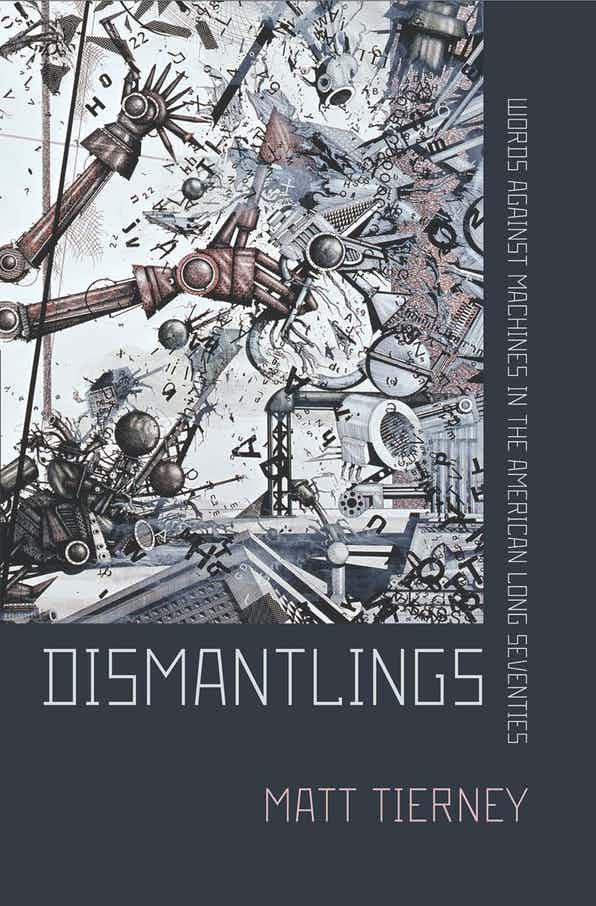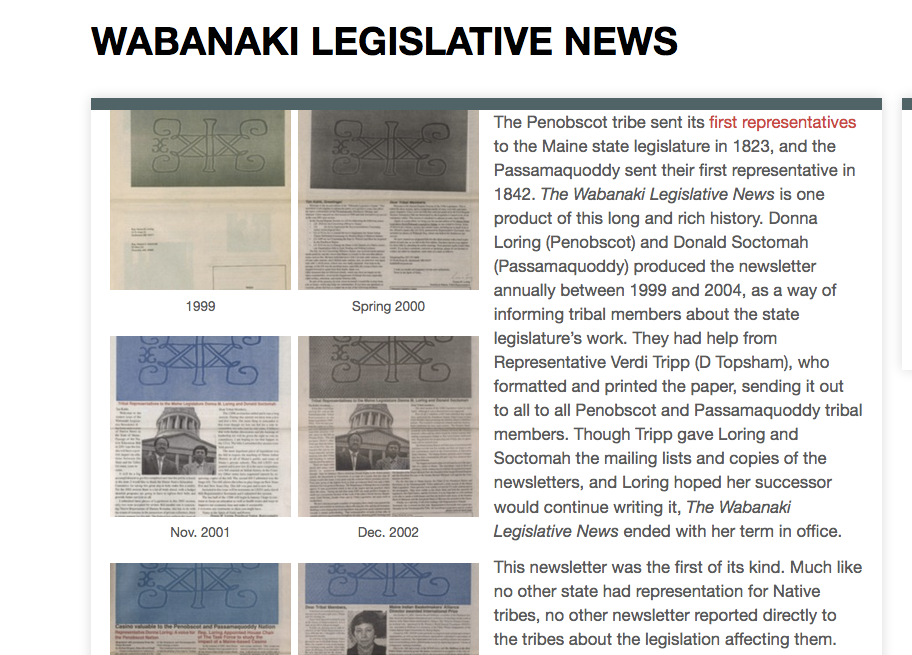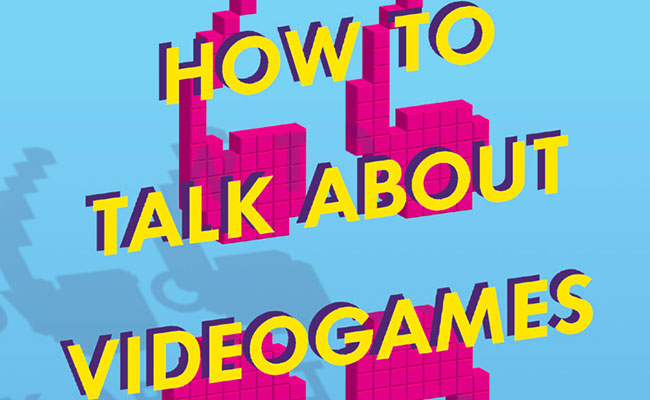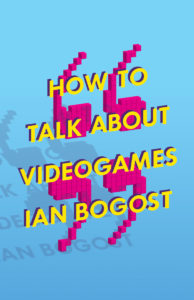a review of Matt Tierney, Dismantlings: Words Against Machines in the American Long Seventies (Cornell University Press, 2019)
by Zachary Loeb
~
The guy said, “If machinery
makes you so happy
go buy yourself
a Happiness Machine.”
Then he realized:
They were trying to do
exactly that.
– Kenneth Burke, “Routine for a Stand-Up Comedian” (15)
A sledgehammer is a fairly versatile tool. You can use it do destroy things, you can use it to build things, and in some cases you can use it to destroy things so that you can build things. Granted, it remains a rather heavy and fairly blunt tool, it is not particularly well suited for fine detail work requiring a high degree of precision. Which is, likely, one of the reasons why those who are famed for wielding sledgehammers often wind up being characterized as being just as blunt and unsubtle as the heavy instruments they swung.
And, perhaps, no group has been more closely associated with sledgehammers, than the Luddites. Those early 19th century skilled crafts workers who took up arms to defend their communities and their livelihoods from the “obnoxious machines” being introduced by their employers. Though the tactic of machine breaking as a form of protest has a lengthy history that predates (and post-dates) the Luddites, it is a tactic that has come to be bound up with the name of the followers of the mysterious General Ludd. Despite the efforts of writers and thinkers to rescue the Luddite’s legacy from “the enormous condescension of posterity” (Thompson, 12), the term “Luddite” today generally has less to do with a specific historical group and has instead largely become an epithet to be hurled at anyone who dares question the gospel of technological progress. Yet, as the second decade of the twenty-first century comes to a close, it may well be that “Luddite” has lost some of its insulting sting against the backdrop of metastasizing tech giants, growing mountains of toxic e-waste, and an ecological crisis that owes much to an unquestioned faith in the benefits of technology.
General Ludd may well get the last laugh.
That the Luddites have lingered so fiercely in the public imagination is a testament to the fact that the Luddites, and the actions for which they are remembered, are good to think with. Insofar as one can talk about Luddism it represents less a coherent body of thought created by the Luddites themselves, and more the attempt by later scholars, critics, artists, and activists to try to make sense of what is usable from the Luddite legacy. And it is this effort to think through and think with, that Matt Tierney explores in his phenomenal book Dismantlings: Words Against Machines in the American Long Seventies. While the focus of Dismantlings, as its title makes clear, is on the “long seventies” (the years from 1965 to 1980) the book represents an important intervention in current discussions and debates around the impacts of technology on society. Just as the various figures Tierney discussed turned their thinking (to varying extents) back to the Luddites, so too the book argues is it worth revisiting the thinking and writing on the matter from the long seventies. This is not a book on the historical Luddites, instead this book is a vital contribution to attempts to theorize what Luddism might mean, and how we are to confront the various technological challenges facing us today.
Largely remembered for occurrences including the Vietnam War, the Civil Rights movement, the space race, and a general tone of social upheaval – the long seventies also represented a period when technological questions were gaining prominence. With thinkers such as Marshall McLuhan, Buckminster Fuller, Norbert Wiener, and Stewart Brand all putting forth visions of the way that the new consumer technologies would remake society: creating “global villages” or giving rise to a perception of all of humanity as passengers on “spaceship earth.” Yet they were hardly the only figures contemplating technology in that period, and many of the other visions that emerged aimed to directly challenge some of the assumptions and optimism of the likes of McLuhan and Fuller. In the long seventies, the question of what would come next was closely entwined with an evaluation of what had come before, indeed “the breaking of retrogressive notions of technology coupled with the breaking of retrogressive technologies…undergoes a period of vital activity during the Long Seventies in the poems, fictions, and activist speech of what was then called cyberculture,” (15). Granted, this was a “breaking” that generally had more to do with theorizing than with actual machine smashing. Instead it could more accurately be seen as “dismantling,” the careful taking apart so that the functioning can be more fully understood and evaluated. Yet it is a thinking that, importantly, occurred against a recognition that the world was, as Norbert Wiener observed, “the world of Belsen and Hiroshima” (8). To make sense of the resistant narratives towards technology in the long seventies it is necessary to engage critically with the terminology of the period, and thus Tierney’s book represents a sort of conceptual “counterlexicon,” to do just that.
As anyone who knows about the historical Luddites can attest, they did not hate technology (as such). Rather they were opposed to particular machines being used in a particular way at a particular place and time. And it is a similar attitude towards Luddism (not as an opposition to all technology, but as an understanding that technology has social implications) that Tierney discusses in the long seventies. Luddism here comes to represent “a gradual relinquishing of machines whose continued use would contravene ethical principles” (30), and this attitude is found in Langdon Winner’s concept of “epistemological Luddism” (as discussed in his book Autonomous Technology) and in the poetry of Audre Lorde. While Lorde’s line “for the master’s tools will never dismantle the master’s house” continues to be well known by activists, the question of “tools” can also be engaged with quite literally. Approached with a mind towards Luddism, Lorde’s remarks can be seen as indicating that it is not only that “the master’s house” must be dismantled but “the master’s tools” as well – and Lorde’s writing suggests poetry as a key tool for the dismantler. The version of Luddism that emerges in the late seventies represents a “sort of relinquishing” it “is not about machine-smashing at all” (47), instead it entails a careful work of examining machines to determine which are worth keeping.
The attitudes towards technology of the long seventies were closely entwined with a sense of the world as made seemingly smaller and more connected thanks to the new technologies of the era. A certain strand of thinking in this period, exemplified by McLuhan’s “global village” or Fuller’s “Spaceship Earth,” achieved great popular success even as reactionary racist and nativist notions lurked just below the surface of the seeming technological optimism of those concepts. Contrary to the “fatalistic acceptance of new technological constraints on life” (48), works by science fiction authors like Ursula Le Guin and Samuel R. Delaney presented a notion of “communion, as a collaborative process of making do” (51). Works like The Dispossessed (Le Guin) and Triton (Delaney), presented readers with visions, and questions, of “real coexistence…not the passage but the sharing of a moment” (63). In contrast to the “technological Messianism” (74) of the likes of Fuller and McLuhan, the “communion” based works by the likes of Le Guin and Delaney focused less on exuberance for the machines themselves but instead sought to critically engage with what types of coexistence such machines would and could genuinely facilitate.
Coined by Alice Mary Hilton, in 1963, the idea of “cyberculture” did not originally connote the sort of blissed-out-techno-optimism that the term evokes today. Rather it was meant to be “an alternative to the global village and the one-town world, and an insistence on collective action in a world not only of Belsen and Hiroshima but also of ongoing struggles toward decolonization, sexual and gender autonomy, and racial justice” (12). Thus, “cyberculture” (and cybernetics more generally) may represent one of the alternative pathways along which technological society could have developed. What “cyberculture” represented was not an exuberant embrace of all things “cyber,” but an attempt to name and thereby open a space for protest, not “against thinking machines” but which would “interrupt the advancing consensus that such machines had shrunk the globe” (81). These concepts achieved further maturation in the Ad Hoc Committee’s “Triple Revolution Manifesto” (from 1964), which sought to link an emancipatory political program to advances in new technology, linking “cybernation to a decrease in capitalist, racist, and militarist violence” (85). Seizing upon an earnest belief that the technological ethics could guide new technological developments towards just ends, “cyberculture” also imagined that such tools could supplant scarcity with abundance.
What “cyberculture” based thinking consists of is a sort of theoretical imagining, which is why a document like a manifesto represents such an excellent example of “cyberculture” in practice. It is a sort of “distortion” that recognizes how “the fates of militarism, racism, and cybernation have only ever been knotted together” and “thus calls for imaginative practices, whether literary or activist, for cutting through the knot” (95). This is the sort of theorizing that can be seen in Martin Luther King, Jr.’s commentary on how science and technology had made of “this world a neighborhood” without yet making “of it a brotherhood” (96). The technological ethics of the advocates of “cyberculture” could be the tools with which to make “it a brotherhood” without discarding all of the tools that had made it first “a neighborhood.” The risks and opportunities of new technological forms were also commented upon in works like Shulamith Firestone’s Dialectic of Sex wherein she argued that women needed to seize and guide these technologies. Blending analysis of what is with a program for what could be, Firestone’s work shows “that if other technologies are possible, then other social practices, even practices that are rarely considered in relation to new technology, may be possible too” (105).
For some, in the long seventies, challenging machinery still took on a destructive form. Though this often entailed a sort of “revolutionary suicide” which represented an attempt to “prevent the becoming-machine of subjugated human bodies and selves” (113). A refusal to become a machine oneself, and a refusal to allow oneself to become fodder for the machine. Such a self-destructive act flows from the Pynchon-esque tragic recognition of a growing consensus “that nothing can be done to oppose” the new machines (122). Such woebegone dejection is in contrast to other attitudes that sought to not only imagine but to also construct new tools that would put the people and community first. John Mohawk, of the Haudenosaunee Confederacy of Mohawk, Oneida, Onondaga, Cayuga, and Seneca people gave voice to this in his theorizing of “liberation technology.” As Mohawk explained at a UN session, “Decentralized technologies that meet the needs of the people those technologies serve will necessarily give life to a different kind of political structure, and it is safe to predict that the political structure that results will be anticolonial in nature” (127). The search for such alternative technologies suggested a framework in which what was needed was “machines to suit the community, or else no machines at all” (129) – a position that countered the technological abundance hoped for by “cyberculture” with an appeal for technologies of subsistence. After all, this was the world of Belsen and Hiroshima, “a world of new and barely understood technologies” (149), in such a world “where the very skin of the planet is a ledger of technological misapplications” (154) it is wise to proceed with caution and humility.
The long seventies present a fascinating kaleidoscope of visions of technologies, how to live with them, how to select them, and how to think about them. What makes the long seventies so worthy of revisiting is that they and the present moment are both “seized with a critical discourse about technology, and by a popular social upheaval in which new social movements emerge, grow, and proliferate” (5). Luddism may be routinely held up as a foolish reaction, but “by breaking apart certain machines, we can learn to use them better, or never use them again. By dissecting certain technocentric cultural logics, we can likewise challenge or reject them” (162). That the Luddites are so constantly vilified may ultimately be a signal of their dangerous power, insofar as they show that people need not passively sit and accept everything that is sold to them as technological progress. Dismantling represents a politics “not as machine hating, but as a way to protect life against a large=scale regimentation and policing of security, labor, time, and community” (166).
To engage in the fraught work of technological critique is to open oneself up to being labeled a Luddite (with the term being hurled as an epithet), to accusations of complicity in the very systems you are critiquing, and to a realization that many people simply don’t want to listen to their smartphone habits being criticized. Yet the various conceptual frameworks that can be derived from a consideration of “words against machines in the American long seventies” provide “tactics that might be repeated or emulated, if nostalgia and cynicism do not bar the way” (172). Such concepts present a method of pushing back at the “yes, but” logic which riddles so many discussions of technology today – conversations in which the downsides are acknowledged (the “yes”), yet where the counter is always offered that perhaps there’s still a way to use those technologies correctly (the “but”).
In contrast to the comfortable rut of “yes, but” Tierney’s book argues for dismantling, wherein “to dismantle is to set aside the dithering of yes, but and to try instead the hard work of critique” (175).
Running through many of the thinkers, writers, and activists detailed in Dismantlings is a genuine attempt to come to terms with the ways in which new technological forces are changing society. Though many of these individuals responded to such changes not by picking up hammers, but by turning to writing, this activity was always couched in a sense that the shifts afoot truly mattered. Agitated by the roaring clangor of the machines of their day, these figures from the long seventies were looking at the machines of their moment in order to consider what would need to be done to construct a different future. And they did this while looking askance at the more popular techno-utopian visions of the future being promulgated in their day. Writing of the historic Luddites, the historian David Noble commented that, “the Luddites were perhaps the last people in the West to perceive technology in the present tense and to act upon that perception” (Noble, 7), and it may be tempting to suggest that the various figures cataloged in Dismantlings were too focused on the future to have acted upon technology in their present. Nevertheless, as Tierney notes, “the present does not precede the future; rather the future (like its past) distorts and neighbors the present” (173) – the Luddites may have acted in the present, but their eyes were also on the future. It is worth remembering that we do not make sense of the technologies around us solely by what they mean now, but by what we think they will mean for the future.
While Dismantlings provides a “counterlexicon” drawn from the writing/thinking/acting of a range of individuals in the late seventies, there is something rather tragic about reading these thoughts two decades into the twenty-first century. After all, readers of Dismantlings find themselves in what would have been the future to these late seventies thinkers. And, to be blunt, the world of today seems more in line with those thinkers’ fears for the future than with their hopes. An “epistemological Luddism” has not been used to carefully evaluate which tools to keep and which to discard, “communion” has not become a guiding principle, and “cyberculture” has drifted away from Hiton’s initial meaning to become a stand-in for a sort of uncritical techno-utopianism. The “master’s tools” have expanded to encompass ever more powerful tools, and the “master’s house” appears sturdier than ever – worse still many of us may have become so enamored by some of “the master’s tools” that we have started to entertain delusions that these are actually our tools. To a certain extent, Dismantlings stands as a reminder of a range of individuals who tried to warn us that we would wind up in the mess in which we find ourselves. Those who are equipped with such powers of perception are often mocked and derided in their own time, but looking back at them with hindsight one can get a discomforting sense of just how prescient they truly were.
Matt Tierney’s Dismantlings: Words Against Machines in the American Long Seventies is a remarkable book. It is also a difficult book. Difficult not because of impenetrable theoretical prose (the writing is clear and crisp), but because it is always challenging to go back and confront the warnings that were ignored. At a moment when headlines are filled with sordid tales of the malfeasance of the tech behemoths, and increasingly terrifying news of the state of the planet, it is both reassuring and infuriating to recognize that it did not have to be this way. True, these long seventies figures did not specifically warn about Facebook, and climate change was not the term they used to speak of environmental degradation – but it’s doubtful that many of these figures would be particularly surprised by either occurrence.
As a contribution to scholarship, Dismantlings represents a much needed addition to the literature on the long seventies – particularly the literature that considers technology in that period. While much of the present literature (much of it excellent) dealing with those years has tended to focus on the hippies who fell in love with their computers, Tierney’s book is a reminder of those who never composed poems of praise for their machines. After all, not everyone believed that the computer would be an emancipatory technology. This book brings together a wide assortment of figures and draws useful connections between them that will hopefully rescue many a name from obscurity. And even those names that can hardly be called obscure appear in a new light when viewed through the lenses that Tierney develops in this book. While readers may be familiar with names like Lorde, Le Guin, Delaney, and Pynchon – Tierney makes it clear that there is much to be gained by reading Hilton, Mohawk, Firestone, and revisiting the “Triple Revolution Manifesto.”
Tierney also offers a vital intervention into ongoing discussions over the meaning of Luddism. While it may be fair to say that such discussions are occurring amongst a rather small group of people, it is a passionate debate nevertheless. Tierney avoids re-litigating the history of the original Luddites, and his timeline cuts off before the emergence of the Neo-Luddites, but his book provides valuable insight into the transformations the idea of Luddism went through in the long seventies. Granted, Luddism does not always appear to be a term that was being embraced by the figures in Tierney’s history. Certainly, Winner developed the concept of “epistemological Luddism,” and Pynchon is still remembered for his “Is it O.K. to Be a Luddite?” op-ed, but many of those who spoke about dismantling did not don the mask, or pick up the hammer, of General Ludd. Thus, this book is a clear attempt not to restate others’ views on Luddism, but to freshly theorize the idea. Drawing on his long seventies sources, Tierney writes that:
Luddism is not the destruction of all machines. And neither is it the hatred of machines as such. Like cyberculture, it is another word for dismantling. Luddism is the performative breaking of machines that limit species expression and impede planetary survival. (13)
This is a robust and loaded definition of Luddism. While it clearly moves Luddism towards a practice instead of simply a descriptor for particular historical actors, it also presents Luddism as a constructive (as opposed to destructive) process. There are several aspects of Tierney’s definition that deserve particular attention. First, by also evoking “cyberculture” (referring to Hilton’s ethically grounded notion when she coined the term), Tierney demonstrates that Luddism is not the only word or tactic for dismantling. Second, by evoking “the performative breaking,” Tierney moves Luddism away from the blunt force of hammers and towards the more difficult work of critical evaluation. Lastly, by linking Luddism to “species expression and…planetary survival,” Tierney highlights that even if this Luddism is not “the hatred of machines as such” it still entails the recognition that there are some machines that should be hated – and that should be taken apart. It’s the sort of message that you can imagine many people getting behind, even as one can anticipate the choruses of “yes, but” that would be sure to greet this.
Granted, even though Tierney considers a fair number of manifestos of a revolutionary sort, Dismantlings is not a new Luddite manifesto (though it might be a Luddite lexicon). While Tierney writes of the various figures he analyzes with empathy and affection, he also writes with a certain weariness. After all, as was noted earlier, we are currently living in the world about which these critics tried to warn us. And therefore Tierney can note, “if no political overturning followed the literary politics of cyberculture and Luddism in their own moment, then certainly none will follow them now” (25). Nevertheless, Tierney couches these dour comments in the observation that, “even as a revolution fails, its failure fuels common feeling without which subsequent revolutions cannot succeed” (25). At the very least the assorted thinkers and works described in Dismantlings provide a rich resource to those in the present who are concerned about “species expression” and “planetary survival.” Indeed, those advocating to break up the tech companies or pushing for the Green New Deal can learn a great deal by revisiting the works discussed in Dismantlings.
Nevertheless, it feels as though there are some key characters missing from Dismantlings. To be clear this point is not meant to detract from Tierney’s excellent and worthwhile book. Furthermore, it must be noted that devotees of particular theorists and social critics tend to have a strong “why isn’t [the theorist/social critic I am devoted to] discussed more in here!?” reaction to works. Nevertheless, there were certain figures who seemed to be oddly missing from Dismantlings. Reflecting on the types of machines against which figures in the long seventies were reacting, Tierney writes of “the war machine, the industrial machine, the computer, and the machines of state are all connected” (4). And it was the dangerous connection of all of these that the social critic Lewis Mumford sought to describe in his theorizing of “the megamachine” – theorizing which he largely did in his two volume Myth of the Machine (which was published in the long seventies). Though Mumford’s idea of “technic” eras is briefly mentioned early in Dismantlings, his broader thinking that touches directly on the core areas of Dismantlings are not remarked on. Several figures who were heavily influenced by Mumford’s work appear in Dismantlings (notably Bookchin and Roszak), and Mumford’s thought could have certainly bolstered some of the books arguments. Mumford, after all, saw himself as a bit of an anti-McLuhan – and in evaluating thinkers who were concerned with what technology meant for “species expression” and “planetary survival” Mumford deserves more attention. Given the overall thrust of Dismantlings it also might have been interesting to see Erich Fromm’s The Revolution of Hope: toward a humanized technology and Ivan Illich’s Tools for Conviviality discussed. Granted, these comments are not meant as attacks on Tierney’s excellent book – they are simply an observation by an avowed Mumford partisan.
To fully appreciate why the thoughts from the long seventies still matter today it may be useful to consider a line from one of Mumford’s early works. As Mumford wrote, in 1931, “every generation revolts against its fathers and makes friends with its grandfathers” (Mumford, 1). To a certain extent, Dismantlings is an argument for those currently invested in debates around technology to revisit “and make friends” with earlier generations of critics. There is much to be gained from such a move. Notable here is a shift in an evaluation of dangers. Throughout Dismantlings Tierney returns frequently to Wiener’s line that “this is the world of Belsen and Hiroshima” – and without meaning to be crass this is an understanding of the world that has somewhat receded into the past as the memory of those events becomes enshrined in history books. Yet for the likes of Wiener and many of the other individuals discussed in Dismantlings, “Belsen and Hiroshima” were not abstractions or distant memories – they were not the crimes that could be consigned to the past. Rather they were bleak reminders of the depths to which humanity could sink, and the way in which science and technology could act as a weight to drag humanity even deeper. Today’s world is the world of climate change, border walls, and surveillance capitalism – but it is still “the world of Belsen and Hiroshima.”
There is much that needs to be dismantled, and not much time in which to do that work.
The lessons from the long seventies are those that we are still struggling to reckon with today, including the recognition that in order to fully make sense of the machines around us it may be necessary to dismantle many of them. Of course, “not everything should be dismantled, but many things should be and some things must be, even if we don’t know where to begin” (163).
Tierney’s book does not provide an easy answer, but it does show where we should begin.
_____
Zachary Loeb earned his MSIS from the University of Texas at Austin, an MA from the Media, Culture, and Communications department at NYU, and is currently a PhD candidate in the History and Sociology of Science department at the University of Pennsylvania. Loeb works at the intersection of the history of technology and disaster studies, and his research focusses on the ways that complex technological systems amplify risk, as well as the history of technological doom-saying. He is working on a dissertation on Y2K. Loeb writes at the blog Librarianshipwreck, and is a frequent contributor to The b2 Review Digital Studies section.
_____
Works Cited
- Lewis Mumford. The Brown Decades. New York: Dover Books, 1971.
- David F. Noble. Progress Without People. Toronto: Between the Lines, 1995.
- E.P. Thompson. The Making of the English Working Class. New York: Vintage Books, 1966.




